What are the challenges of drone manufacturing and how 3D printing can help
Let's focus on the drone industry ! What are the challenges of drone manufacturing ? How can additive manufacturing help go through these challenges ?
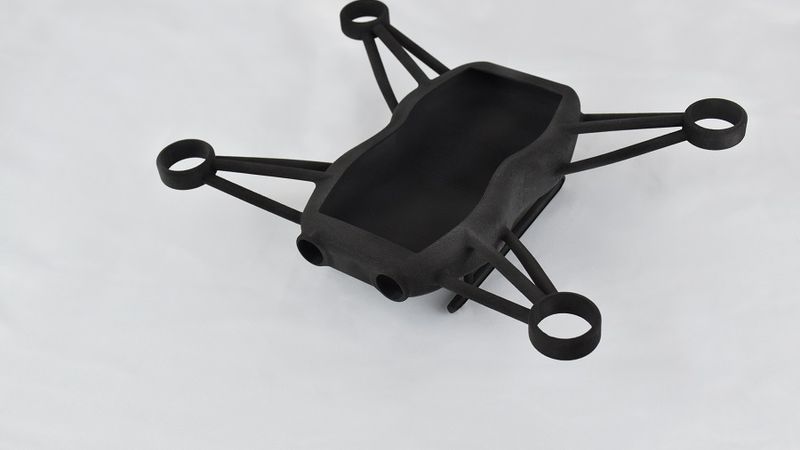
3D printing drones
Drones or UAV technology for Unmanned Aerial Vehicles are being deployed to more and more applications and industries. These drones can operate under remote control by a human operator or autonomously by onboard computers. The opportunities offered by drones are endless, they are now used in several sectors, such as agriculture, military, aerospace, cinema, or security.
Do you have a drone project for your company? Are you looking to start a drone business?
We are going to focus on drone manufacturing, to help you find the best solutions possible for your drone manufacturing process, and, hopefully, find the right drone manufacturer.
FREE EBOOK: Get the best tips for drone manufacturing! Experts share their experience, lessons and tips about drone manufacturing.
Focus on the drone industry
What is happening in the drone sector?
Drone companies are now producing quadcopters, hexacopters, and quite anything from foam to high-grade materials in professional gear. Drones can be used for the most technical applications and are real engineering devices.
2020 has been a rough year for all industries, and the drone sector is also suffering. Droneii led a study, the Drone Industry Barometer, and asked about the long-term impact of the COVID-19 crisis on the drone industry, 54% of respondents were optimistic, expecting a positive overall impact. Indeed, companies are looking for more automation. This report will also get more details about the adoption of drones by business, saving time (and therewith increasing overall productivity) is mentioned as the most important advantage of drone adoption (60%), followed by increasing the quality of the result (59%).
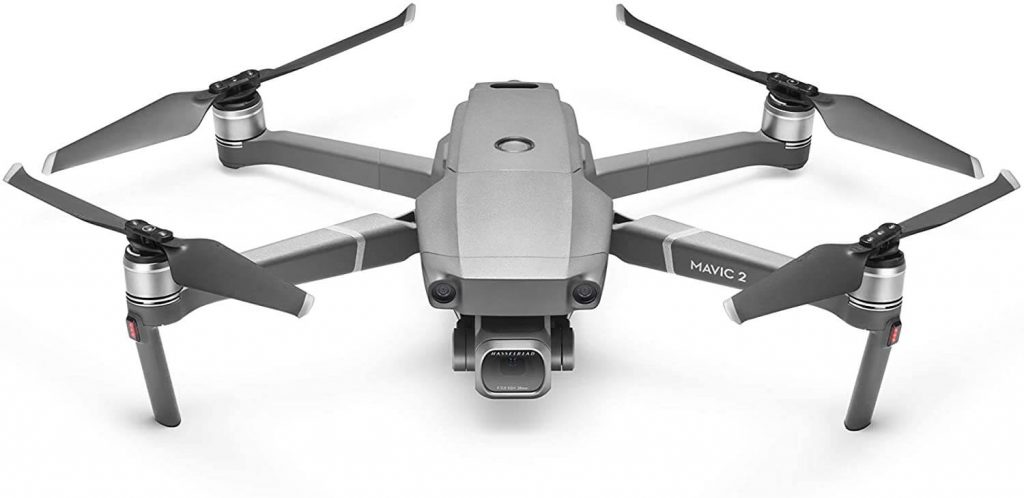
Dji Mavic drone
What are drone technologies used for?
Drone technologies are evolving quickly, becoming more and more advanced using automation and artificial intelligence, but the drone market has some specificities. Indeed, drones are advanced technical electronic devices, with different parts: a body, power supply, sensors, communications, flight control, software, etc.
What are these advanced UAV solutions used for? We often hear about military drones or drones for delivery that are developed and tested, but these are not the only applications. You have some popular drones on the market. You certainly know the market leading DJI Mavic pro, or heard about companies such as 3D robotics.
Drone operations make it possible to get accurate aerial images. Cameras on drones are ideal opportunities to get images and videos without having to send an actual plane with a pilot. Professional drones can have impressive flight endurance. Professional drones can be used for intelligent surveillance, but also for search and rescue of people in remote areas. A drone can easily fly in dangerous zones to find survivors, after a catastrophe, such as an earthquake. These drones could enable emergency services to see images in real-time and be more efficient by saving time in the research. Some drones are specifically made for capturing, viewing, and analyzing aerial imagery and survey data. Drones are taking aerial photography, this feature can be used for many different purposes, from research to industrial inspections or construction, or even filmmaking.
More than aerial photos some drones are also using photogrammetry software: drone mapping software running on your computer, and even available offline. This software uses drones to create textured 3D models, geo-referenced maps, and point clouds. Its features include the ability to get orthorectified maps, 3D models, and point clouds in a variety of formats. They even allow for the possibility to create and use GCPs for additional accuracy. Some of these devices can even be used for thermal imaging.
But that is not all, these flying devices can also be used for drone racing, with a great evolution of FPV racing drone (First Person View). Some of these vehicles can also be used by any hobbyist, with civilian drones.
As you can see drones are not used for only one purpose, they all have their specificities, features, and applications. To manufacture these engineering designs, we need innovation, reliability, and adaptability. That is why additive manufacturing might be a solution to consider!
Some big actors of the drone industry
- DJI
DJI is the leader of consumer drones, thanks to its Mavic series, with drones made for new to intermediate videographers.
- Parrot
Known for its ANAFI camera drone, Parrot develops consumer UAVs and drones and works with the US Department of Defense.
- Yuneec
Yuneec first focused on innovating in the aircraft industry. They are now known for producing the first ready-to-fly, out-of-the-box drone: The Typhoon Q500 quadcopter. Yuneec drones are now quite big on the drone market.
- Autel Robotics
Autel Robotics is a market leader for aerial exploration, with its quadcopter and camera drone technology. Their goal is to transform complex technology into simple solutions, creating easy-to-use aerial devices for photography, fiming, and imaging
Drones and 3D printing
Whether to create a whole drone or just some parts, additive manufacturing is offering the possibility of accessing high performance and innovative features. Micro drones, pocket drones, FPV quadcopter drones, radio-controlled drones, every idea and project can come to life in the world of 3D printing.
What are the advantages of using additive manufacturing for drones?
- Create lightweight parts
From the automotive and aeronautics industry to the drone industry, we’ve noticed that one of the most regular requirements was linked to the weight of the whole vehicle they needed to produce. Indeed, while creating a flying object such as a drone, it is important to get the lightest parts possible. Additive manufacturing allows innovation in terms of design, from hollowed parts to interesting structures such as lattices.
By rethinking the structure of a drone you already have, you can end up with a significant weight reduction! Design for Additive Manufacturing allows for completely innovative structures that can change the way drones and drone attachments are made. The result? A lighter, stronger, more functional drone.
- Complex design and assembly
While manufacturing an electronic automated device, you need several parts working and interacting together: for drones, robotics, and electronics, additive manufacturing offers numerous advantages. Using this manufacturing technique is an opportunity to create complex designs and geometries, impossible to create with traditional manufacturing technologies such as CNC machining or injection molding. Additive manufacturing is allowing to print fully assembled parts, a way to save time by shortening the assembly process, reduce the number of components, and also reduce weight.
- Limitless innovation for your projects
3D printing allows you to design according to your products and projects, not according to stock fittings. You need a brand new innovative feature, requiring perfectly adapted parts? Feel free to test and iterate your connectors, mounts or attachments thanks to the short lead-times offered by 3D printing.
- Maintenance management, spare parts
Implementing additive manufacturing in your production process will also offer better maintenance management. Additive manufacturing can be used to produce spare parts when you need them. You don’t have to worry about a whole stock of spare parts, you should invest your energy in the creation of a digital inventory, that will seriously improve your maintenance and risk management!
- Mass-customization
Are you creating drones based on specific customers’ expectations and requirements? In this case, you might need to build drones with specific parts and features. Customization is expensive while using traditional manufacturing methods such as injection molding, but not with additive manufacturing. For small series, 3D printing will be a cost-saving technique, as you can print the exact amount of parts you need.
Examples: Best 3D printed drones projects
At Sculpteo, we are already working with drone companies looking for quality, reliability and innovation. Hexadrone is a company based in France, building drones and offering their service to film for TV shows, advertisements or movies. As they are creating high-quality filming, they need a stable drone.
As there is actually a weight limitation for drones, Hexadrone needed to use a light material. And that is where 3D printing shows to be a helpful solution. They used our plastic material, and the SLS technology enables them to get resistant and complex parts, perfectly fitting their needs.
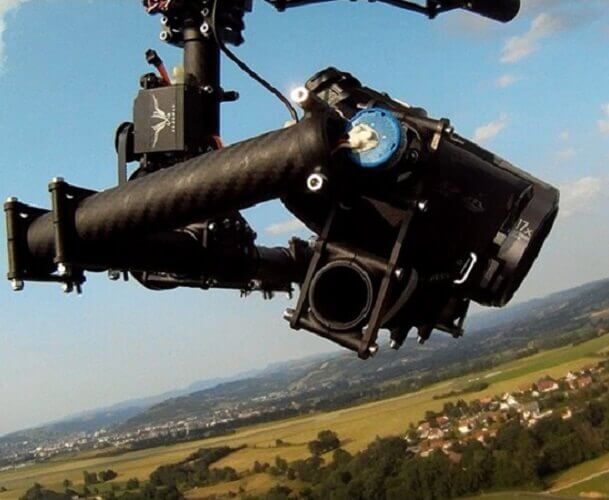
We’ve also worked with Svarmi, Iceland’s leading drone specialists in drone mapping for scientific and industrial purposes.
“With 3D printing, one does not need to think too much about how to manufacture and can save maybe up to 30% of the initial concept design time.” explained Svarmi after using our online 3D printing service. As their product development is based on their clients’ expectations, 3D printing allows them to be free and customize their drone as much as their customers need it. As this company explained to us: “Other traditional manufacturing methods are too slow and costly for our purposes since we need to be able to have something ready within a week or two. After integrating the new sensors to our drones we test them out with our customers and redefine the requirements if needed to suit the task and sometimes redo the process again by refining the design or selection of sensors.”
If you want to discover more examples, check out the best 3D printed drones projects!
How can we help you manufacture drones?
- Optimize your parts by rethinking your design
Thanks to our Sculpteo Studio team, use the full potential of Design for Additive and get the freedom and flexibility you deserve to develop your drone projects. Sculpteo Studio’s team is here to support you at any stage of your project, from helping you identify the 3D printing opportunities of your company to the manufacturing process of your finished parts. Get support from experienced 3D printing experts from prototyping to production.
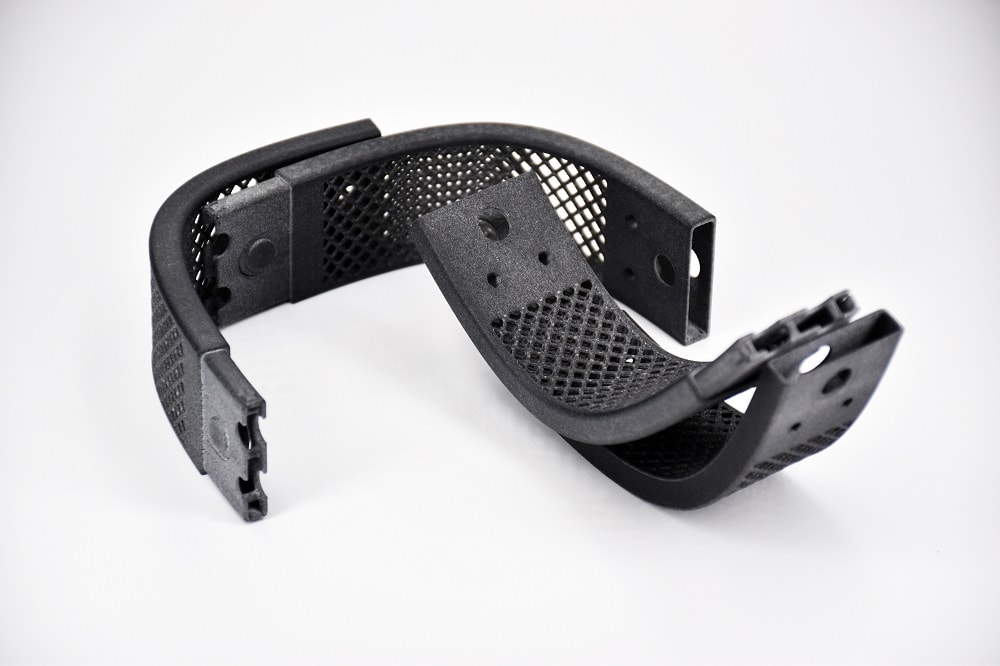
- Access perfectly adapted materials
A large choice of high-performance materials are here to help you meet the requirements of your industry. For drone manufacturing one of our basics, such as Nylon PA12 could be a good solution. But a more advanced material such as Ultrasint® PA11 CF could be even more adapted to the creation of drones. Your parts will be 3D printed using sustainable powder, derived from castor oil. Parts 3D printed with Ultrasint® PA11 CF offer even greater strength and rigidity due to Carbon Fiber reinforcement. This can ensure the longevity of the drone even with rough landings.
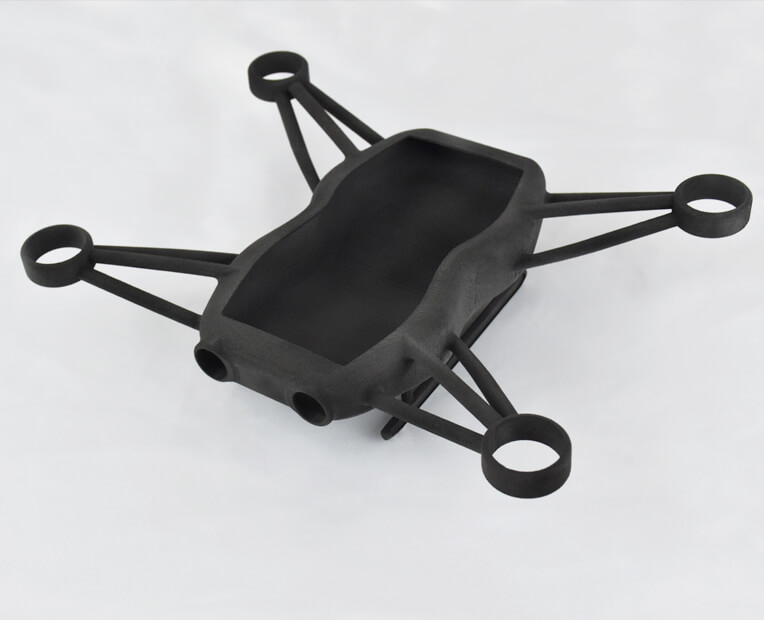
- An easy process, for reliable and quality results
At Sculpteo we have the experience and the technologies to help your business grow and face new challenges. For more than 10 years, Sculpteo has supported businesses in a variety of industries to make the most of 3D printing. Drone manufacturing is not an exception, and we know we can partner with your company to bring you further, using innovative manufacturing.
Already have a 3D file? Feel free to upload your 3D model on Sculpteo's online 3D printing service. If you are now considering using additive manufacturing to develop your business but have no clue how to get started, contact Sculpteo, our team is waiting to hear from you.